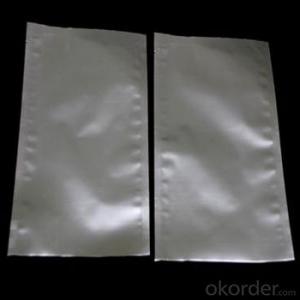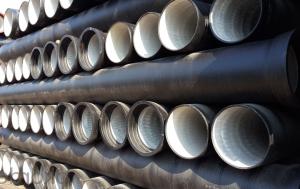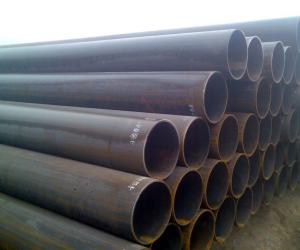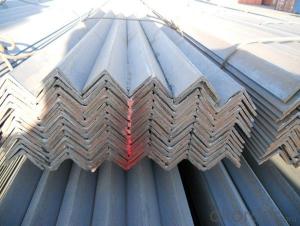Cte Of Stainless Steel
Cte Of Stainless Steel Related Searches
Shiny Or Dull Side Of Aluminum Foil For Cooking Inverter For 100w Solar Panel Solar Panel Inverter For Rv Pvc Tiles For Walls Wall Lights For Bedrooms Inverter Ac With Solar Panel Solar Panel With Inverter Kit Solar Panel Kits With Inverter Solar Panel With Inverter Direct Roving For PultrusionHot Searches
Steel Mesh Panels For Sale Type Of Inverter For Solar Price Of Shipping Containers For Sale Types Of Inverter For Solar Aluminum Bar Stock For Sale Bags Of Cement For Sale Types Of Temporary Side Panels For Cement Deck Cost Of Awnings For Decks Type Of Scaffolding With Pdf Price Of Scrap Stainless Steel Price Of Stainless Steel Scrap Price Of Stainless Steel Galvanized Steel Scrap Price Type Of Stainless Steel Types Of Stainless Steel Grades Types Of Stainless Steel Aluminum Corp Of China Stock Types Of Scaffolding In Construction Pdf Stainless Steel Factory Stainless Steel TypeCte Of Stainless Steel Supplier & Manufacturer from China
Okorder.com is a professional Cte Of Stainless Steel supplier & manufacturer, offers integrated one-stop services including real-time quoting and online cargo tracking. We are funded by CNBM Group, a Fortune 500 enterprise and the largest Cte Of Stainless Steel firm in China.Hot Products
FAQ
- Yes, stainless steel sheets are suitable for food packaging equipment. Stainless steel is a popular choice for this application due to its excellent corrosion resistance, durability, and hygienic properties. It can withstand frequent cleaning and sterilization processes, ensuring food safety and maintaining the quality of packaged products. Additionally, stainless steel is non-reactive, preventing any contamination or alteration of the food during packaging. Overall, stainless steel sheets are a reliable and suitable material for food packaging equipment.
- The thermal expansion rate of stainless steel sheets varies depending on the specific grade of stainless steel and the temperature range in which it is exposed. Generally, stainless steel has a coefficient of thermal expansion (CTE) of around 10-17 x 10^-6 per degree Celsius (µm/m°C). This means that for every degree Celsius increase in temperature, the stainless steel sheet will expand by 10-17 micrometers per meter of length. It is important to note that the CTE can vary slightly for different grades of stainless steel, so it is recommended to consult the manufacturer's specifications or engineering handbooks for more precise information on the thermal expansion rate of a particular stainless steel sheet.
- Certainly! Roofing or cladding can definitely utilize stainless steel sheets. Stainless steel, being a durable and resistant material, is perfectly suitable for exterior purposes. It provides exceptional strength and can endure severe weather, thus making it an ideal option for roofing or cladding. On top of that, stainless steel presents a sleek and contemporary look that can enhance a building's aesthetic charm. Moreover, its long-lasting nature and minimal maintenance needs make it a cost-effective choice in the long term. All in all, stainless steel sheets are a dependable and adaptable option for roofing or cladding ventures.
- Yes, stainless steel sheets can be used in food processing applications. Stainless steel is a popular choice for food processing equipment due to its excellent corrosion resistance, durability, and hygienic properties. It is highly resistant to staining, rusting, and contamination, making it suitable for direct contact with food. Stainless steel sheets are commonly used for surfaces such as countertops, work tables, and food preparation areas in commercial kitchens and food processing facilities. Additionally, stainless steel is easy to clean and maintain, which is crucial in ensuring food safety and compliance with industry regulations.
- Stainless steel sheets come in a variety of surface finishes, each with its own unique characteristics and aesthetics. Let's explore some of the options available: 1. The No.1 Finish is the most commonly used finish for stainless steel sheets. It has a rough and dull appearance with visible grain lines. This finish is achieved through hot rolling and is suitable for applications where a rough finish is acceptable. 2. For a smooth and slightly dull surface, the No.2B Finish is ideal. It is obtained by cold rolling and annealing the stainless steel. This finish is commonly used for kitchen appliances, architectural accents, and decorative purposes. 3. Similar to the No.2B Finish, the No.2D Finish also involves cold rolling and annealing. However, it has a smoother and shinier appearance, making it suitable for applications that require a more polished look. 4. The No.3 Finish, also known as a brushed finish, is achieved by polishing the stainless steel with abrasive belts or brushes. It creates a unidirectional satin-like appearance, often used for decorative purposes in architecture and interior design. 5. If you desire a more refined and smoother appearance, the No.4 Finish is the way to go. This finish is obtained by polishing the stainless steel with finer abrasive belts or brushes than the No.3 Finish. It is commonly used for decorative purposes, such as elevator panels, kitchen equipment, and automotive trim. 6. For a highly reflective surface, the No.8 Finish, also known as a mirror finish, is perfect. This finish is achieved by continuously polishing the stainless steel with finer abrasive materials until a glossy, mirror-like appearance is obtained. It is ideal for architectural and decorative applications. 7. The Hairline Finish is achieved by mechanically polishing the stainless steel surface with a fine abrasive material. It creates a subtle, linear pattern with a matte appearance, commonly used for architectural accents, appliances, and decorative items. These are just some of the most common surface finishes available for stainless steel sheets. The choice of finish will depend on the desired aesthetics, functionality, and application requirements.
- Depending on specific requirements and desired precision, there are several methods available for cutting stainless steel sheets. One commonly used method is shearing, which involves utilizing a machine with sharp blades to cut through the material. Shearing is ideal for straight cuts and offers a relatively fast and cost-effective solution. For high precision and intricate designs, laser cutting is a highly recommended method. It utilizes a powerful laser beam to provide a clean and smooth cut. This method is widely used in industries that prioritize precision and quality finishes. Plasma cutting, on the other hand, utilizes a high-temperature plasma arc to melt through stainless steel sheets. It is particularly suitable for cutting thick sheets or materials with high conductivity. This method offers fast cutting speeds and can handle various shapes and thicknesses. Waterjet cutting is a versatile method that involves using a high-pressure jet of water mixed with abrasive particles to cut through stainless steel sheets. It offers high precision and can create complex shapes. Additionally, waterjet cutting is a cold process, meaning it does not produce heat-affected zones or alter the material's structure. In situations where other methods are not feasible, abrasive cutting can be used. This method involves using an abrasive wheel or disc to grind and cut through stainless steel sheets. It can be done manually or with the assistance of power tools, such as angle grinders. The choice of cutting method depends on various factors, including the thickness of the stainless steel sheet, desired precision, budget, and production requirements. Each method has its own advantages and limitations, allowing for flexibility in choosing the most suitable option.
- To prevent intergranular corrosion on stainless steel sheets, there are several steps that can be taken: 1. Opt for the appropriate stainless steel grade: Choose stainless steel grades that are specifically designed to resist intergranular corrosion, such as 304L, 316L, or 321. These grades have a lower carbon content, which minimizes the formation of chromium carbides at grain boundaries. 2. Apply heat treatment: After fabrication or welding, subject the stainless steel sheets to a solution annealing or post-weld heat treatment process. This treatment eliminates any chromium carbides that may have formed during welding or high-temperature processing, effectively preventing intergranular corrosion. 3. Avoid high temperature exposure: It is crucial to avoid subjecting stainless steel sheets to temperatures between 450 to 850 degrees Celsius (842 to 1562 degrees Fahrenheit) for extended periods. Prolonged exposure to such temperatures can lead to the formation of chromium carbides at the grain boundaries, rendering the stainless steel susceptible to intergranular corrosion. 4. Utilize proper welding techniques: When welding stainless steel sheets, it is important to employ low heat input and minimize the duration of exposure to high temperatures. These measures help reduce the formation of chromium carbides and preserve the corrosion resistance of the stainless steel. 5. Employ pickling and passivation: After fabrication or welding, ensure that the stainless steel sheets undergo thorough pickling and passivation. Pickling removes any surface contaminants, while passivation forms a protective oxide layer that prevents intergranular corrosion. 6. Regularly maintain and clean: To prevent potential corrosion, it is essential to keep the stainless steel sheets clean and free from contaminants. Regularly clean the surfaces using mild detergents and avoid the use of harsh chemicals or abrasive materials that may damage the protective oxide layer. By following these preventative measures, the risk of intergranular corrosion on stainless steel sheets can be significantly reduced, allowing for the preservation of their corrosion resistance properties and an extended lifespan.
- Due to their unique composition and structure, stainless steel sheets possess excellent fire resistance properties. Unlike other materials, stainless steel does not easily burn or ignite when exposed to high temperatures. This is primarily because stainless steel contains a high amount of chromium, which generates a thin, protective oxide layer on its surface upon exposure to air. This oxide layer acts as a barrier, preventing the underlying steel from reacting with oxygen and further enhancing its fire resistance. Moreover, stainless steel exhibits a high melting point, typically ranging from 1400-1450°C (2552-2642°F), which surpasses that of most common building materials. Consequently, stainless steel sheets can endure extreme heat without distorting or compromising their structural integrity, thereby offering supplementary fire protection. Furthermore, stainless steel is non-combustible, signifying that it does not contribute to the fuel load of a fire. This attribute holds significant importance in construction and industrial applications, where fire safety remains a paramount concern. In conclusion, the fire resistance properties of stainless steel sheets render them an optimal choice for diverse applications, including building construction, transportation, and industrial settings, where fire protection is imperative.













































